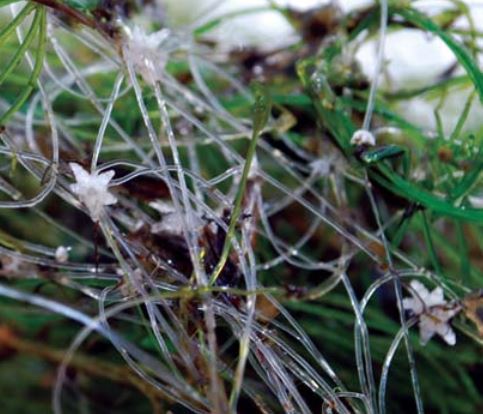*Prohibited in Michigan
Description:
Starry stonewort is a submerged aquatic macroalgae with many irregular branches. It is native to Europe and was likely introduced in ballast water to the Great Lakes. Fragments of starry stonewort can easily attach to the fur and feathers of mammals and birds, or attach to boats and fishing equipment allowing it to spread from one water body to another.
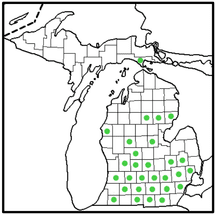
Reports show that Starry stonewort was first found in 1983 at Lake St. Clair, along the St. Clair and Detroit Rivers. Now it occurs in lakes in all Lower Peninsula basins and in Millecoquins Lake of the Upper Peninsula. Michigan has the most reported occurrences of any State
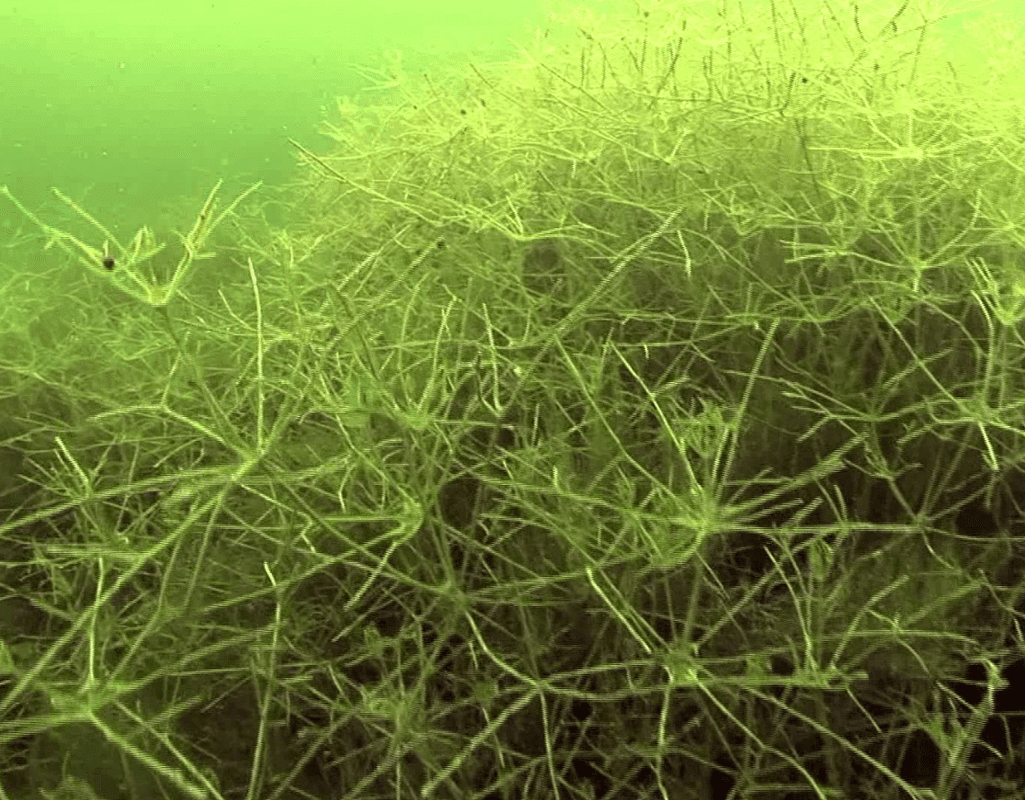
Impacts of Starry Stonewort
Starry stonewort forms dense mats in lakes and can significantly reduce the diversity of other aquatic plants. Dense mats of vegetation can also impede the movement of fish, spawning activity, water flow, and recreational activities.Impacts of Starry Stonewort
Starry stonewort forms dense mats in lakes and can significantly reduce the diversity of other aquatic plants. Dense mats of vegetation can also impede the movement of fish, spawning activity, water flow, and recreational activities.
Starry Stonewort Identification
Starry stonewort is soft with a light green hue. It often branches in whorls of 4-6, angled toward the tip of the growth. The branches are separated by long tube-like cells. Small white stars a couple millimeters across adorn clumps of the algae.
Starry stonewort is often confused with a native algae called muskgrass or Chara. Muskgrass is similar in appearance to starry stonewort, but is typically more bristly and has a bottom cover less than a foot tall. Muskgrass also lacks the small white stars of starry stonewort.
- Whorls of 4-6 branchlets/leaves with blunt tips
- Star-shaped bulbils are produced at the nodes, generally 3-6 mm wide
- Can reach up to 33 inches
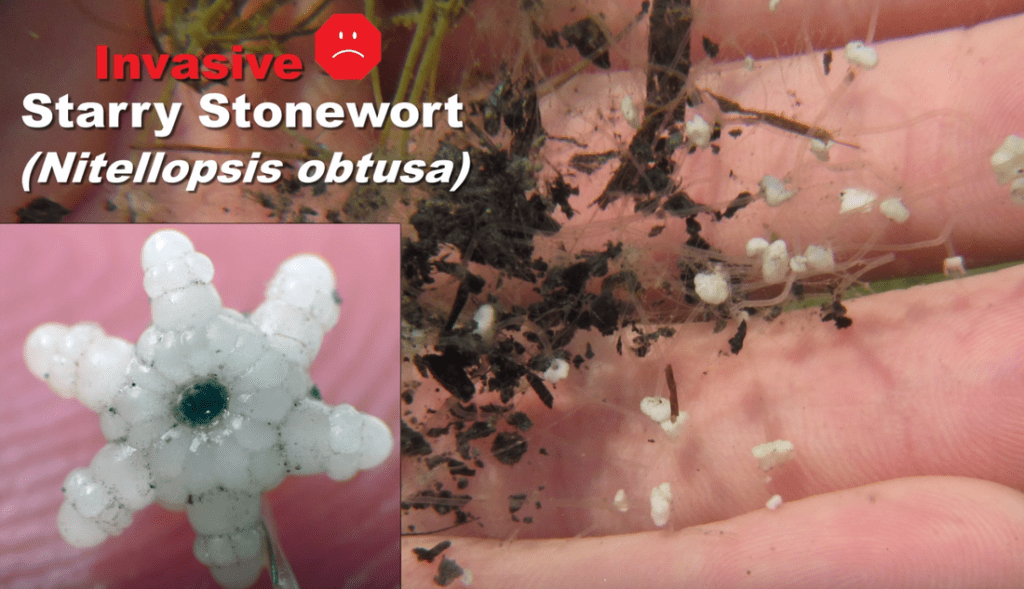
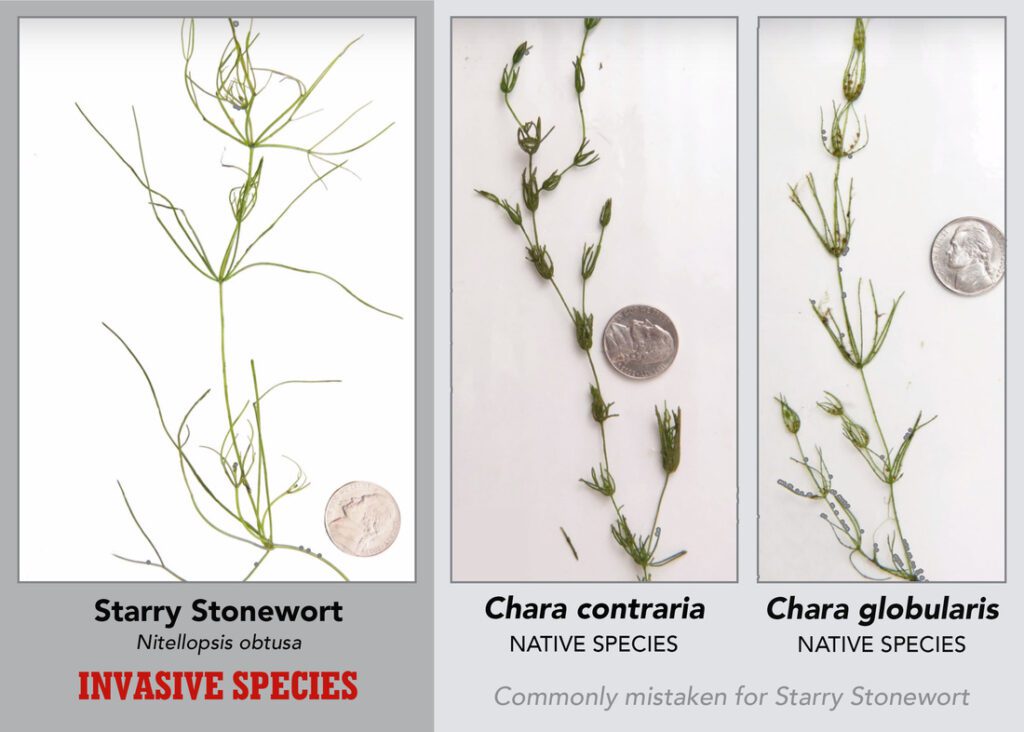
The Squeeze Test
Starry stonewort is often mistaken for other types of macroalgae like Chara. One test that may be used to distinguish Starry Stonewort from Chara is the “squeeze test.” In Starry Stonewort the protoplasm inside will pop out of the cell when squeezed. The remaining cell wall becomes a limp straw. In Chara, the protoplasm does not separate easily from the cell wall..
What can you do to prevent the spread of this invasive species
- Learn to identify Starry stonewort.
- Inspect and remove aquatic plants and animals from boat, motor and trailer.
- Drain lake or river water from live well and bilge before leaving access.
- Rinse boat and equipment with high-pressure hot water (104° F), especially if moored for more than a day, or dry everything for at least 5 days before launching in a new body of water.
- Report sightings of Starry stonewort to Tip of the Mitt Watershed Council by calling (231) 347-1181 or by
e- mailing info@watershedcouncil.org . Please note the exact location in which you saw the species.
